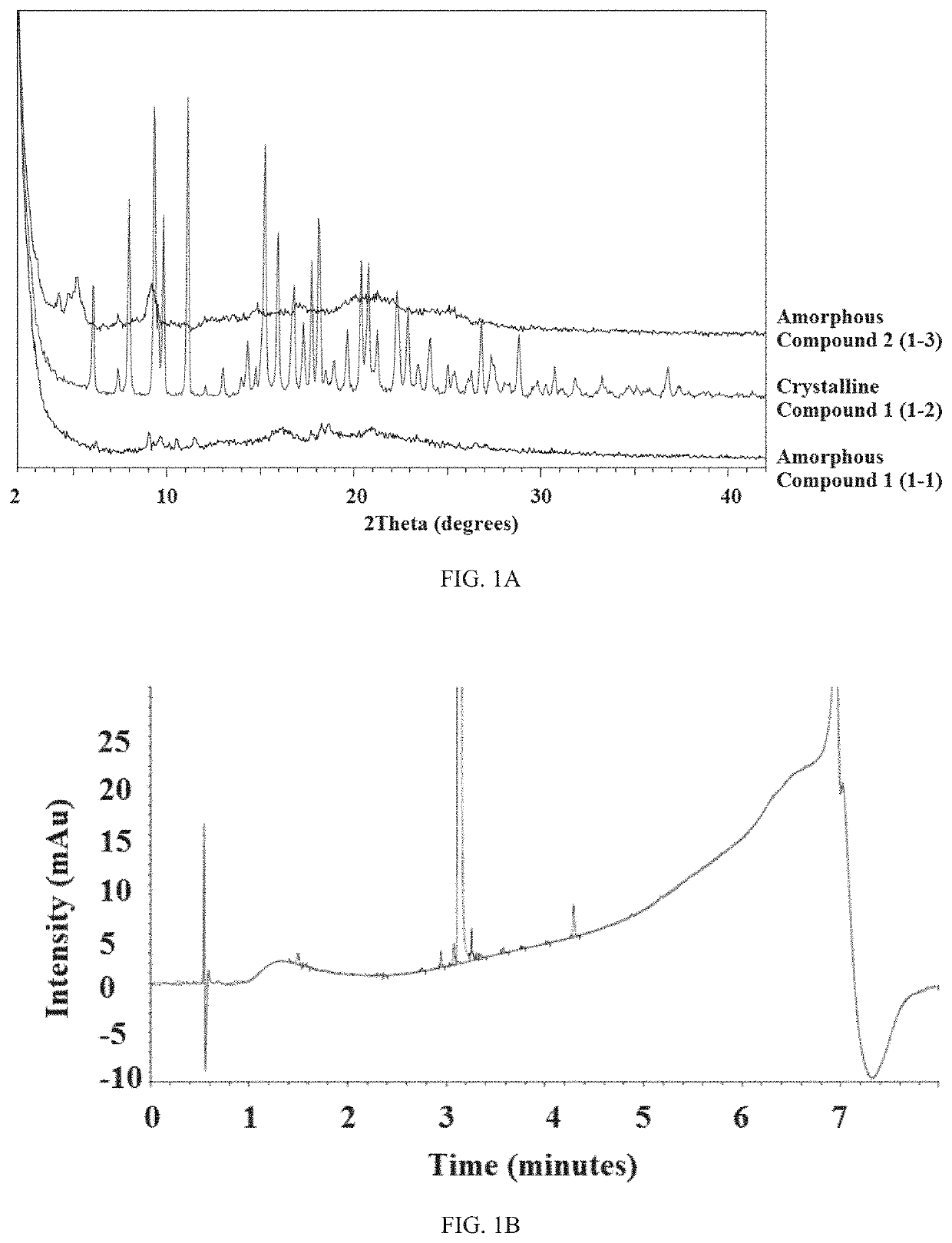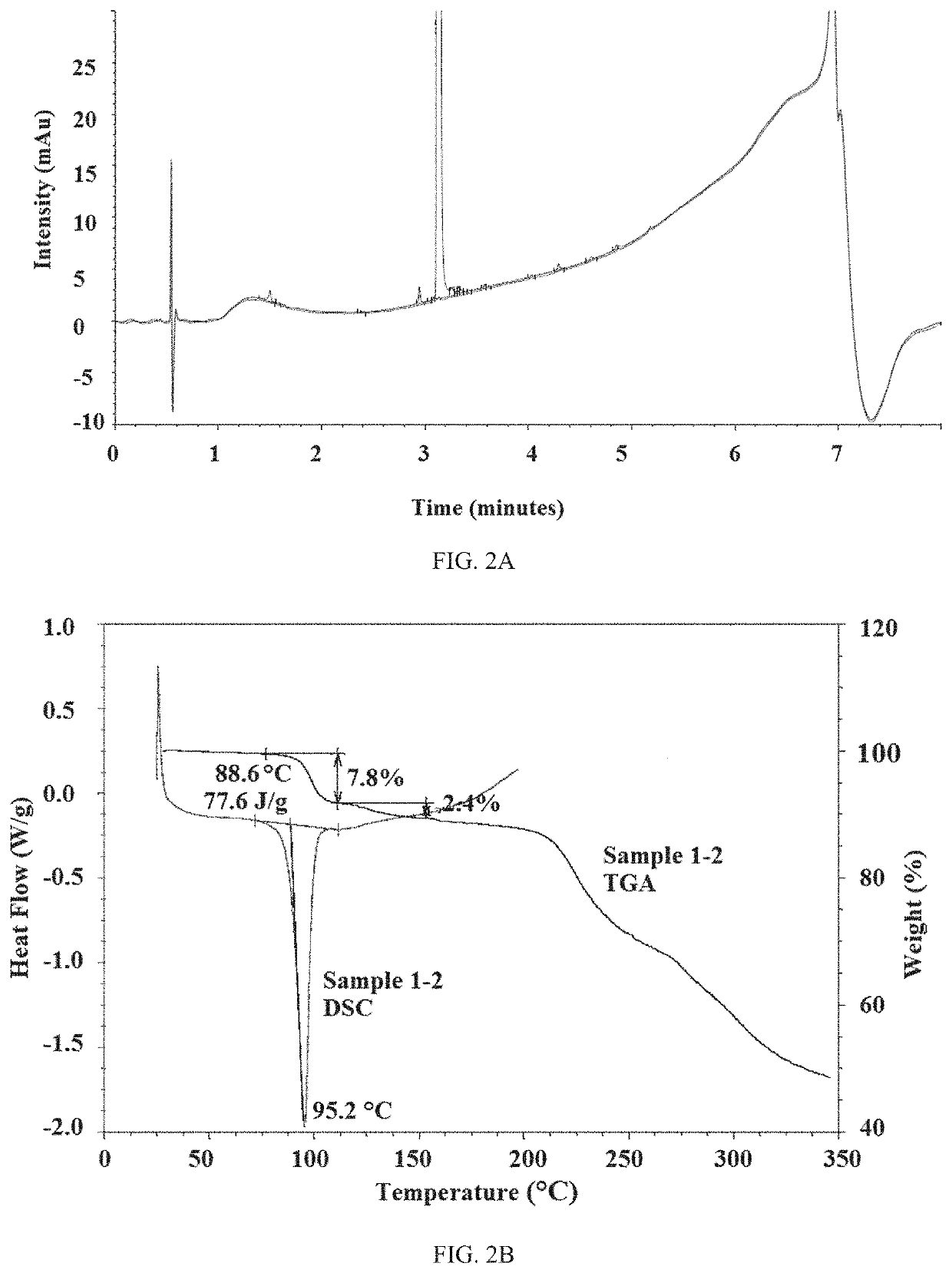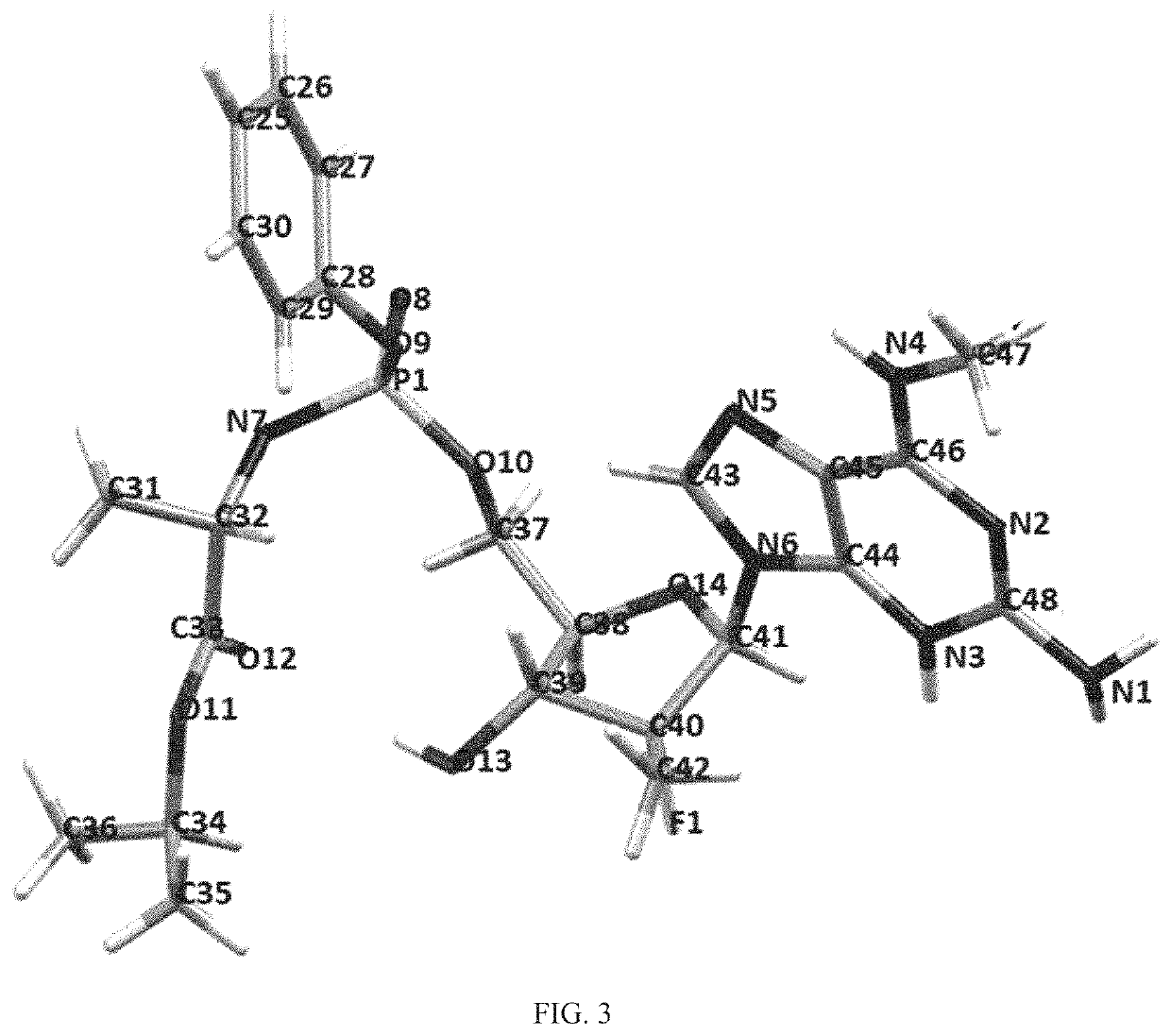Nucleotide hemi-sulfate salt for the treatment of hepatitis C virus
a hepatitis c virus and hemisulfate salt technology, applied in the field of hemisulfate salt, can solve the problems of serious liver injury, liver failure that may require a liver transplant, cirrhosis and liver cancer, etc., and achieve the effect of reducing potential off-target effects and reducing undesired off-target partitioning
- Summary
- Abstract
- Description
- Claims
- Application Information
AI Technical Summary
Benefits of technology
Problems solved by technology
Method used
Image
Examples
example 1
Synthesis of Compound 1
[0217]
Step 1: Synthesis of (2R,3R,4R,5R)-5-(2-Amino-6-(methylamino)-9H-purin-9-yl)-4-fluoro-2-(hydroxymethyl)-4-methyltetrahydrofuran-3-ol (2-2)
[0218]A 50 L flask was charged with methanol (30 L) and stirred at 10±5° C. NH2CH3 (3.95 Kg) was slowly ventilated into the reactor at 10±5° C. Compound 2-1 (3.77 kg) was added in batches at 20±5° C. and stirred for 1 hour to obtain a clear solution. The reaction was stirred for an additional 6-8 hours, at which point HPLC indicated that the intermediate was less than 0.1% of the solution. The reactor was charged with solid NaOH (254 g), stirred for 30 minutes and concentrated at 50±5° C. (vacuum degree: −0.095). The resulting residue was charged with EtOH (40L) and re-slurried for 1 hour at 60° C. The mixture was then filtered through celite and the filter cake was re-slurried with EtOH (15 L) for 1 hour at 60° C. The filtrate was filtered once more, combined with the filtrate from the previous filtration, and then co...
example 2
Characterization of Amorphous and Crystalline Compound 1
[0224]Amorphous Compound 1 and crystalline Compound 1 were initially analyzed by XRPD, 1HNMR, and HPLC. The XRPD patterns for both compounds are shown in FIG. 1A and the HPLC traces to determine purity are shown in FIGS. 1B and 2A, respectively. Table 1 is a list of peaks from the XRPD of crystalline Compound 1 and Table 2 is a list of relative retention times (RTT) from the HPLC traces. Amorphous Compound 1 was 98.61% pure and crystalline Compound 1 was 99.11% pure. Both compounds were a white solid. FIG. 2B is the TGA and DSC graphs of crystalline Compound 1. For crystalline Compound 1, an endotherm was observed at 88.6° C. and there was a 7.8% mass loss from 80-110° C.
[0225]A sample of Compound 1 was recrystallized from EtOAc / hexane and drawn with ORTEP. The absolute structure of Compound 1 was confirmed by the recrystallization of a single crystal. FIG. 3 is the ORTEP drawing of Compound 1. Crystal data and measurement data...
example 3
Formation of Oxalate Salt Compound 4
[0237]Initially, the oxalate salt of Compound 1, Compound 4, was formed by mixing the oxalic salt with solvent (5 vol, 100 μL) and allowing any solution to evaporate at room temperature. Any suspension was matured (room temperature—50° C.) for 3 hours and crystallinity was accessed.
[0238]
[0239]Table 4 shows the different solvents used in the production of Compound 4. All solvents except for two (cyclohexane and n-heptane) afforded crystalline products. Despite the high crystallinity and solubility of Compound 4, oxalate salts are not acceptable for clinical development due to the potential formation of kidney stones and other salts of compound 1 were explored.
[0240]
TABLE 4Formation of Oxalate Compound 4Observation post acidObservation afteraddition at roommaturation / SolventtemperatureevaporationEtOHSolutionOXA-Form 1IPASolutionOXA-Form 1AcetoneSolutionOXA-Form 1MEKSolutionOXA-Form 1EtOAcSuspensionOXA-Form 1iPrOAcSuspensionOXA-Form 1THFSolutionOXA-...
PUM
| Property | Measurement | Unit |
|---|---|---|
| concentration | aaaaa | aaaaa |
| concentration | aaaaa | aaaaa |
| concentration | aaaaa | aaaaa |
Abstract
Description
Claims
Application Information
 Login to View More
Login to View More - R&D
- Intellectual Property
- Life Sciences
- Materials
- Tech Scout
- Unparalleled Data Quality
- Higher Quality Content
- 60% Fewer Hallucinations
Browse by: Latest US Patents, China's latest patents, Technical Efficacy Thesaurus, Application Domain, Technology Topic, Popular Technical Reports.
© 2025 PatSnap. All rights reserved.Legal|Privacy policy|Modern Slavery Act Transparency Statement|Sitemap|About US| Contact US: help@patsnap.com



